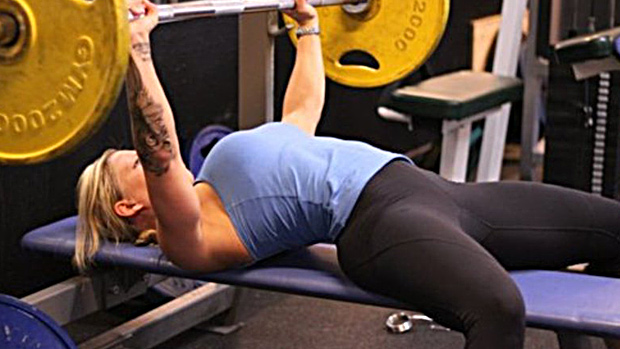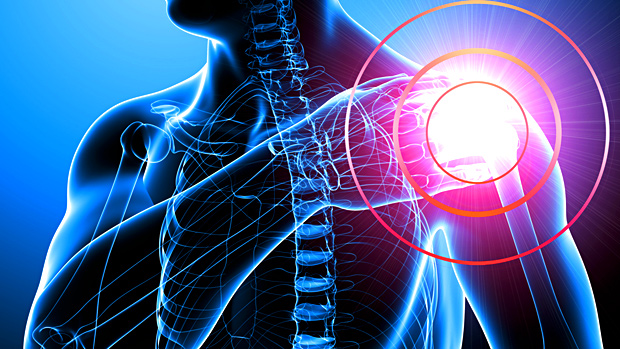Here's what you need to know...
- The menstrual cycle has a huge influence on a female's metabolic state and training results.
- The follicular phase is when women should focus on progress. It's characterized by a higher tolerance for pain and increasing levels of endurance.
- Insulin sensitivity is higher during the follicular phase. Her body will be more prone to using carbs to fuel muscle gains.
- During ovulation, high estrogen levels can make women more prone to injury.
- During the luteal phase, the female body will rely more on fat as a fuel source.
You work hard each and every time you hit the gym. You give 100% effort and make sure that you eat right. You think you're doing everything right, but could there be something you aren't even aware of diminishing your results?
Each and every day, your hormones control you. You're well aware that testosterone, the male predominant sex hormone, is responsible for making men more muscular, strong, and aggressive. But what about your hormones?
As a woman, each month your body goes through a series of events known as the female menstrual cycle. What most women don't realize, however, is the influence this cycle can have on your metabolic state and training results.
Let's look more closely at this issue and explain what's going on. The good news is once you understand the ramifications of these hormones, you can cater your program to overcome them and even take advantage of them to further your training results.
First, keep in mind we're talking about premenopausal women who aren't using oral birth control.
Now, the start of your cycle begins immediately after you finish menstruating with the follicular phase, lasting from day zero to 14. This phase is characterized by increasing estrogen, normal progesterone, and an average body temperature.
From there, you move into ovulation, which takes place around day 14. When this occurs, your estrogen level peaks and progesterone starts to increase. You'll also notice you start to feel warmer.
From day 15 to 28 of your cycle, you'll enter the luteal phase where estrogen is declining, progesterone is increasing, and your body temperature remains higher than baseline.
Menstruation then follows to start things off all over again.
Now let's talk about what you go through during each phase.

When it comes to your workout sessions, the follicular phase – including the ovulation period – is when you should focus on progress.
This phase is characterized by a higher tolerance for pain, the highest maximum voluntary force generation capacity, as well as increasing levels of endurance. Your body will also be more prone to utilizing muscle glycogen to fuel exercise during this stage, making high-carb workout nutrition critical.
To add to this, your insulin sensitivity levels will be higher during this phase, so focus on higher carb phases or refeeds during intense, carb-depleting workouts. Your body will be more prone to using those carbs to fuel muscle gains.
These intense workouts, coupled with metabolism-enhancing refeeds, will also help to counteract the decline in your resting metabolic rate that takes place during this time. One study published in the American Journal of Clinical Nutrition noted that basal metabolic rate decreased during menstruation and then proceeded to decline to its lowest point one week before ovulation took place.
During ovulation, your strength levels will still be high and you may notice the highest sheer force generation capacity during this phase. If you want to set a PR, now is the time to try. One study published in the Journal of Physiology noted that ovulating women showed an 11% increase in both quadriceps as well as handgrip strength.
Take note, though, that you may also be at a higher risk of injury. As estrogen skyrockets to its highest point during this phase, it can impact collagen metabolism and also influence your neuromuscular control. It was noted in the American Journal of Sports Medicine that anterior cruciate ligament injury rates are four to eight times higher during this point in the cycle than in all other phases.
So train hard at this time, but be especially careful about using good form and being mindful of fatigue build-up.
Your metabolism will also be starting to climb at this point, so if you're feeling a little extra hungry, understand that this may very well be why. Consider adding a few more calories to your diet to fuel this increase, but get those calories from a balanced mix of proteins, carbs, and fats as your insulin sensitivity is starting to decline.

Ever have workouts where it seems your body is just fighting you every step of the way? If so, chances are good it's happening during your luteal phase.
During the luteal phase, with your body temperature higher than normal, you'll experience higher cardiovascular strain and a decrease in time to exhaustion. In addition to this, you may be retaining excess water weight due to PMS, making it more uncomfortable to perform very intense sprint-like activities.
Your body will also rely more heavily on fat as a fuel source during the luteal phase instead of muscle glycogen. Doing workouts that can utilize fat as fuel is a wise move.
This all points to utilizing lower-intensity cardio training coupled with moderate intensity strength work. For those suffering from very high fatigue and discomfort, yoga may be the route to go as studies suggest it may help lessen the severity and duration of PMS symptoms.
Metabolically, your body will be at its peak during this time. A study in the American Journal of Clinical Nutrition suggests your metabolism will be humming along about 7.7% higher than normal, and you'll also experience a greater thermic effect from food as your body will burn more calories digesting than it normally does.
One thing you want to watch out for in this phase, however, is your craving for high carbohydrate foods. Your serotonin production will be lower, and that can promote a poor mood and irritability. Your instinct will be to eat more carbs as they cause a rapid release of serotonin, instantly providing a mood boost and natural high.
However, due to your insulin sensitivity now being at its lowest point and the fact you'll be lowering the intensity of your workouts due to your high fatigability, you need to keep your carb intake under control.
With the higher metabolic rate and more moderate-paced exercise training, this is a prime time to opt for a lower carb, lower calorie phase to kick-start fat burning. Some women may also report feeling nauseated during this time due to PMS symptoms, so the decrease in food intake may be quite welcomed.
To help offset the decline in serotonin and calm those cravings for carbs, consider supplementing with tryptophan or eating foods rich in this amino acid such as turkey, skim milk, soybeans, or pumpkin seeds as they can help produce a natural spike in this neurotransmitter precursor.

Finally, as menstruation gets underway, you'll start feeling more like your normal self. PMS symptoms will subside, your body temperature will return to more normal levels, and your water retention will clear.
This makes it a good time to begin transitioning back to more intense workouts as you move into the follicular phase. Your metabolism will be on its way down and insulin sensitivity will be increasing, so transition back to a more moderate calorie, mixed diet that's neither high carb or low carb.
Then as you move back to the follicular phase, you can start implementing your higher-carb refeed periods in hopes of building more lean muscle mass.
By taking into account how your cycle is impacting your body during various points in the month, you can make your training work with you rather than against you.
It only makes sense to transition to deloading periods or times of lighter work during the luteal phase when you should eat a lower carb diet that corresponds to your metabolic state at this time.
Likewise, it makes sense to focus on PR setting workouts or those aimed at maximum intensity during the follicular period when energy is high, strength is up, and insulin sensitivity is maximized.





